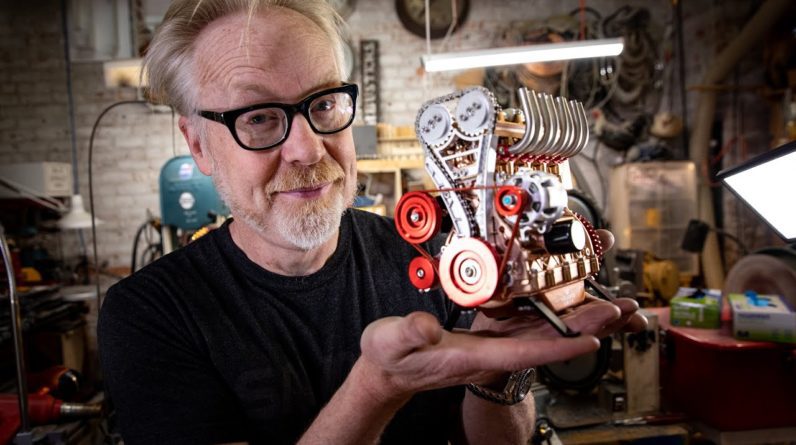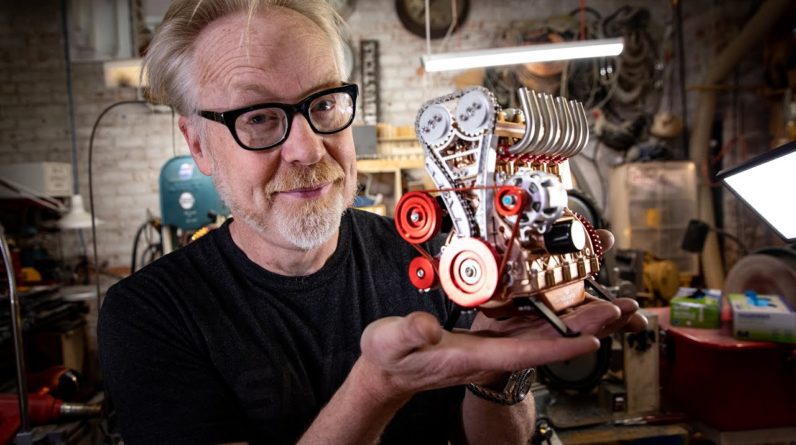What is good boys? This is 494 Garage and I am DeeEss The Plastic
Mechanic. Now, I have done a lot of takes for this already,
so I am not much of a presenter, and straight after that you are going to know I am not
much of a singer either, but sometimes in life, like making a model, you have just got
to go with the flow and make a start. So with no further ado, and no more takes,
this is 494 Garage, I am DeeEss, and this is a theme song. IPMS Scale Model World, the world’s biggest
plastic model show, was held last month. Thousands of people headed out to Telford
to enjoy the festivities and competitive hostilities, and I had to be one of them. To cut a long story short, I bought some tickets,
took some pictures, swapped some old kits, found my bed and breakfast, had a nice fish
and chips in a nice chip shop, found out what “the last lamp post” meant, checked out
my new kits, got some sleep, got some breakfast, went back to Scale Model world, took some
more pictures, and finally went home.
The biggest highlight of the trip though,
was stumbling across Ron and Ian Knott’s amazing Motor Museum in Miniature. Hundreds of scale models packed into one diorama. I hope you enjoy taking a look at this creation. I did. At first, I did not realise I was looking
at a museum. I was really studying that VW bus. Im sure that kit has got a manufacturing or
design flaw or something that stops the doors working. I do not know. I do not think I have ever seen one that does
not have broken hinges or glued doors or something like that, but anyway… While I was looking, I noticed an old geezer
noticing me so I assumed he had to be the builder. He asked if I liked that one, and I replied,
talking about the doors and stuff, like I knew something, and he was courteous, but then
he started to tell me about the model right beside it. This is his 1889 Daimler Wire Wheel Car. The world’s first V2 engined car. Also, the world's first first four-wheeled wire-wheeled car. Also, the world's first four-speed manual transmission car. You might not of heard of it but you get the
idea.
Here is a picture of the original. It is a super-important vehicle in the development
of the car industry. And here again is Ron’s replica – with working
wheels and working steering. Now, at this point it is only fair to highlight
the fact that Ron built his model from scratch. No kit to buy. No template to be found. No problem. In hindsight I really did not notice the huge
entrance wagon right beside them, because my mind was still kind of blown from what
I had just been shown so I’m glad I got some pictures.
Little did I know that I was just getting
started with this diorama. On the other side of that wall, The Motor
Museum in Miniature was nothing less than that. A replica scale motor museum. It has got vehicles, exhibits, visitors, staff,
merchandise, refreshments… It has got three separate exhibition halls. I don’t think there is anything more you
could expect. Fire extinguishers, seating areas, dustbins. Just look for yourself… Now, Hall 1 was set up as the history hall. All the significant marques, manufacturers
and contributors were represented in some way shape or form. Iconic cars and bikes. Iconic engines. Curated displays describing the history of
the petrol pump, and the evolution of the motor car. I have got a lot of vintage kits so I was
glad to see a few of them included, but it was clear that these guys had kits on kits
on kits, and Ron, being a complete gentleman, answered all of my questions. I cannot honestly remember what model this
was of but that is on me. And I’ll be seeing Ron again. But at the time I honestly could not comprehend
what I was seeing.
Ron had scratch built every important car
from the beginning of what we call motoring. And they were built solidly. He was picking them up, handling them and
showing off their features. Look at this 1885 Daimler motorbike. And how about this Citroen 2CV? It might be a missing headlight lamp, but
this was scratch-built many many years before any kit release. Canvas seats, canvas roof. You know what it is… Hall 2 was filled with special versions and
more exhibitions breaking down the wider history of motoring. Original and rally versions were placed side
by side, and I just loved this little display built from two tiny Vespa kits from Tamiya. Ian had taken over the tour and he explained
how he had built up the blue one as a Paris-Dakar Rally version. He told me that this was not t just a random
creation he made because he had the kits, he explained that the humble Vespa was the
most reliable vehicle ever to compete in the Paris Dakar rally. Probably, because it could
practically surf over the sand on its iconic wide foot board.
Here is a display showing how road direction
signs have developed over the years. And here are two Morris Minors. Now, you probably have not seen a Morris Minor
kit, but this time they are not scratch built. These are built up from a resin kit that Ron
and Ian have developed themselves as their first commercially available kit. Kind of ironic that the first kit they have
brought out is of the first car I ever wanted as a kid. No doubt I will be building my dream Morris
soon. Anyways like I said, I am not much of a presenter
yet, so let us watch the pictures talk for a while Hall 3 was dedicated to professional motor
racing.
Again, the pictures will probably talk more
sense than I will, but I have got to say I loved it. Ron and Ian have well over 200 vehicles for
their museum, so they can change exhibits and change themes at will and that is just
in 1/24 scale. I am going to be meeting up with Ron and Ian
again ASAP to make a follow up video, so if you like what you have been watching subscribe
and leave a like, because I will be coming back with more.
More videos, More builders, more models, and
more shows This is 494 garage, you have been watching
The Motor Museum in Miniature. I am DeeEss The Plastic Mechanic. And I am out..






